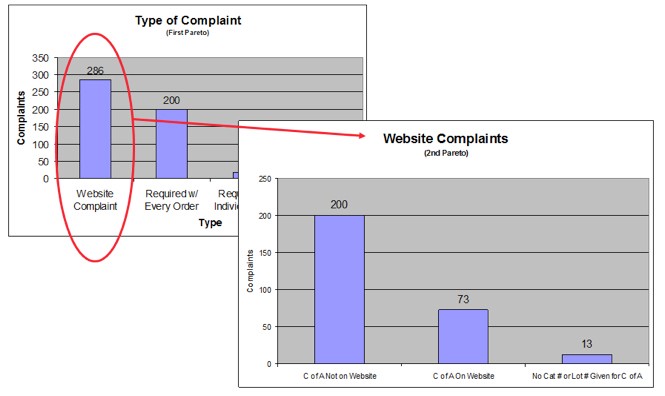| Enterprise Solutions | Instrument Services | Parts & Consumables | Support | Training | About Us | Contact Us |
USA phone for analytical instruments: 800-532-4752
USA phone for laboratory equipment: 1 888-860-5227, Option 3, then 1
Need contact info for other countries? Click here.

Did you say Pareto Charts?
By Kelly Huckabone
June 2020
The Pareto Chart analyzes the frequency of problems or causes in a process. In quality control, it most often represents the most common sources of defects, the highest occurring type of defect, or the most frequent reasons for why something is happening.
We use a Pareto Chart as a key tool when working through practical process improvement (PPI) or Lean projects. Typically, you start with a larger amount of data and after sorting it into “buckets,” an idea of where a deeper dive may be required should be apparent.
Data from a Pareto Chart can help you assess or validate the magnitude of the issue and then help you narrow down areas of focus. This is the basic concept of the 80/20 rule in that roughly 80 percent of the effects come from 20 percent of the causes. Here are the basic steps:
Step 1
Develop a list of problems, items, or causes to be compared.
Step 2
Develop a standard measure for comparing the items (frequency, time, and cost).
Step 3
Choose a timeframe for collecting the data.
Step 4
For each item, tally how often it occurred (depending on what you are assessing).
Step 6
List the items from highest to lowest on the horizontal axis of a graph. Label the left vertical axis with the numbers (frequency, time, or cost).
Step 7
Analyze the diagram by identifying those items that appear to account for most of the difficulty. The next step will typically involve performing a next-level Pareto for the most commonly occurring data.
Here is an example of a Pareto Chart from a past project we worked on:

The Pareto Chart is a visual tool that can help a team discover where to focus attention when seeking the root cause of a problem.
Download a PDF of this article
